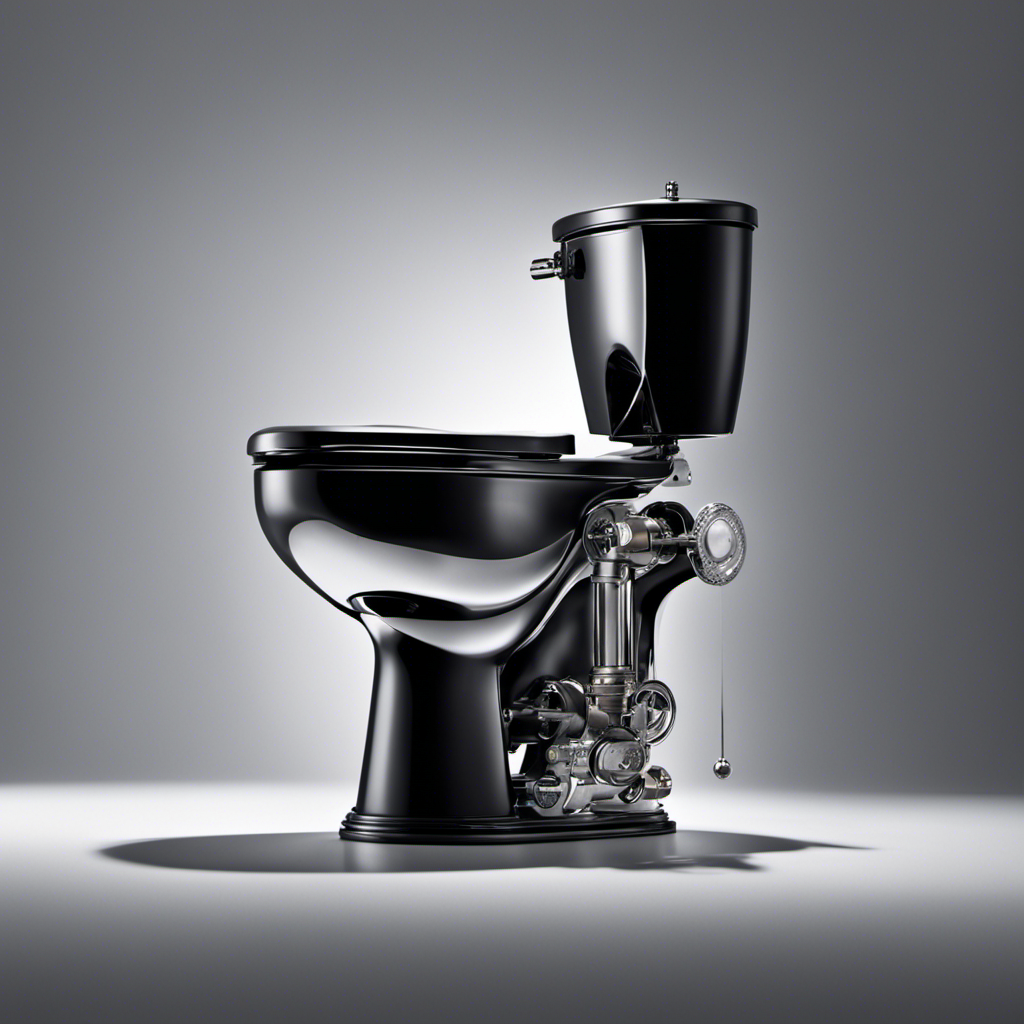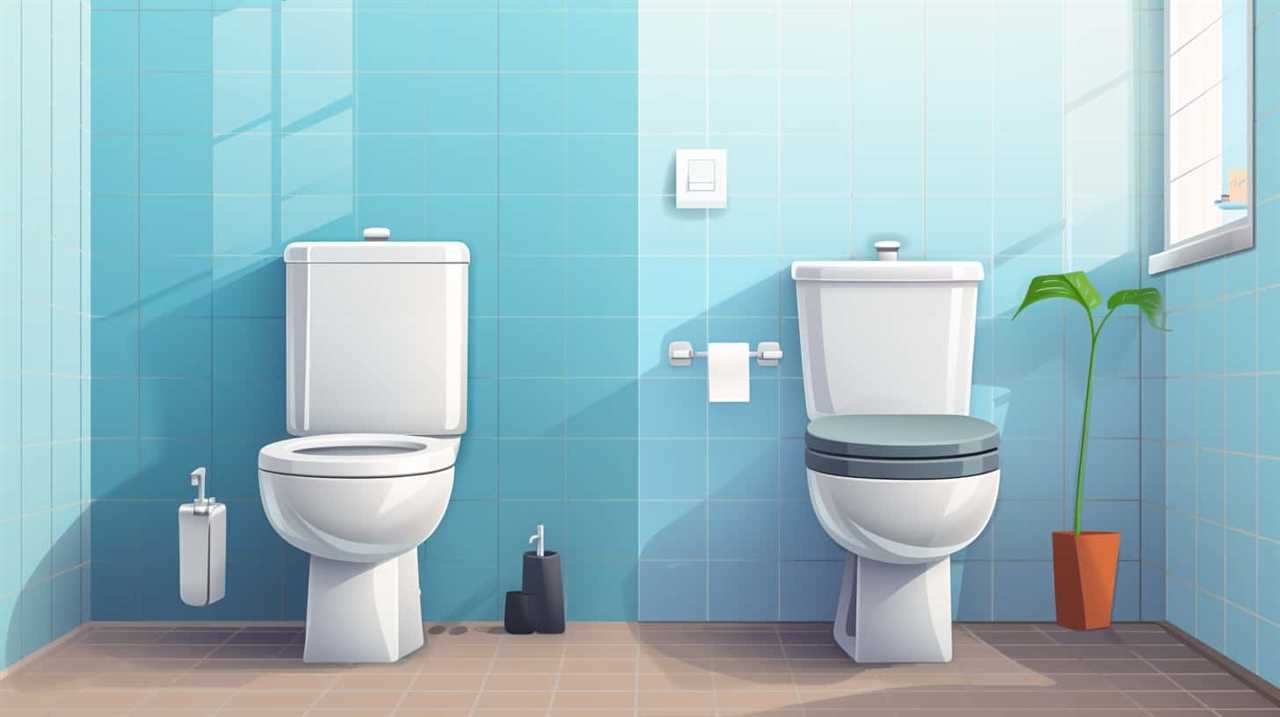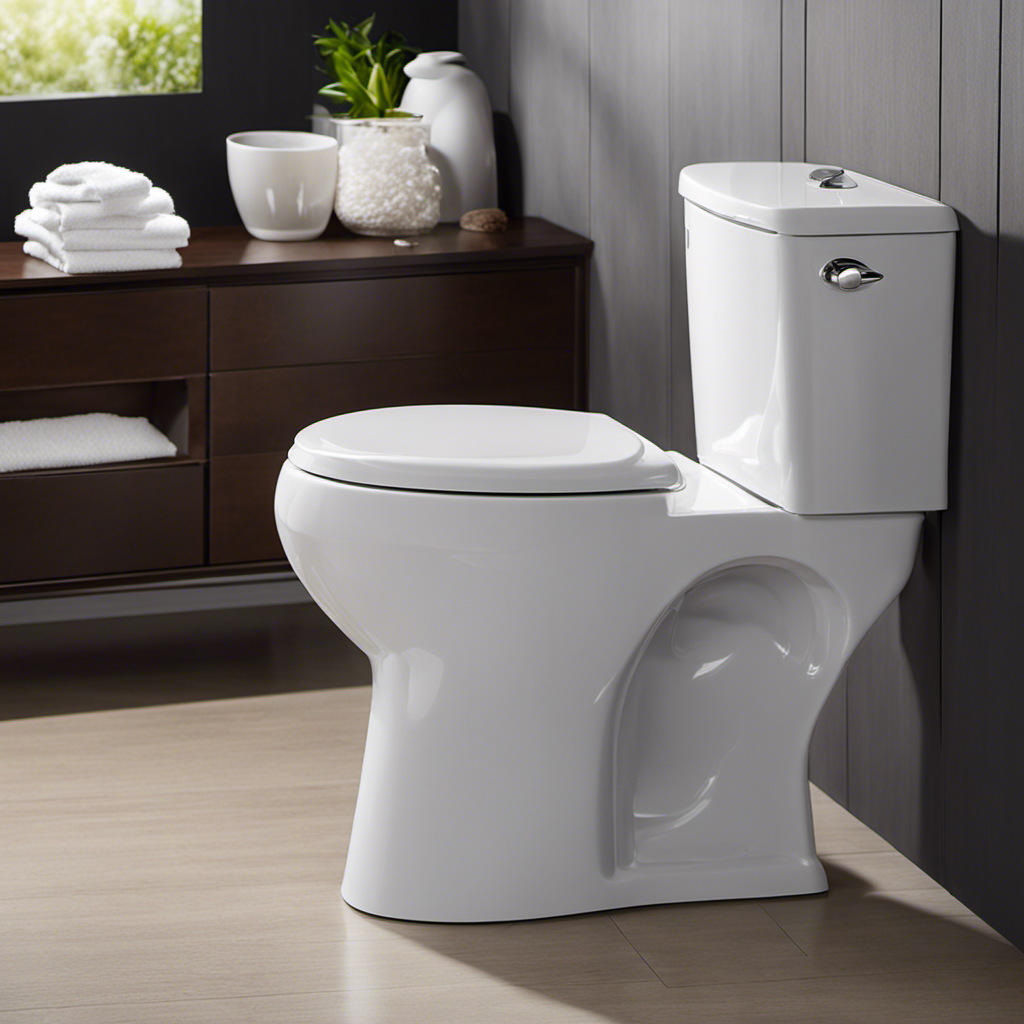Hey there! Ever wondered why your toilet seems to have a mind of its own and never stops running? Well, you’re not alone. In this article, I’m going to dive into the common causes of a running toilet, and trust me, it’s not just a simple case of bad luck.
From faulty flappers to wonky fill valves, I’ll guide you through the step-by-step process of fixing this pesky problem.
So, buckle up and get ready to become a toilet troubleshooting expert!
Key Takeaways
- A faulty flapper is a common cause of a running toilet.
- Signs of a faulty flapper include a constant hissing sound, water constantly flowing into the bowl, and water pooling around the base of the toilet.
- To fix a running toilet with a faulty flapper, inspect the flapper for wear or damage and replace it if necessary.
- If DIY methods don’t resolve the issue, it may be necessary to call a professional plumber to diagnose and repair the problem.
Common Causes of a Running Toilet
One common cause of a running toilet is a faulty flapper that needs to be replaced. The flapper is a small rubber valve located at the bottom of the toilet tank. Its purpose is to seal off the tank and prevent water from continuously flowing into the bowl. However, over time, the flapper can become worn out or damaged, resulting in a water leak.
When the flapper doesn’t create a tight seal, water can escape from the tank into the bowl, causing the toilet to constantly run. This not only wastes water but can also lead to higher water bills.
To fix this issue, simply replace the faulty flapper with a new one to restore the proper functioning of your toilet.
Faulty Flapper: The Culprit Behind Toilet Running
Check if the flapper is faulty, as that’s often why your toilet keeps running. A faulty flapper can cause water to continuously flow from the tank to the bowl, resulting in a running toilet.
There are several common signs that indicate a faulty flapper. If you hear a constant hissing sound, notice water constantly flowing into the bowl, or see water pooling around the base of the toilet, it’s likely that the flapper is to blame.
To troubleshoot this issue, start by inspecting the flapper for any visible signs of wear or damage. If you notice any cracks or deterioration, it’s time to replace the flapper. Additionally, ensure that the chain connecting the flapper to the flush handle is properly adjusted and not too tight or too loose.
Fixing a Running Toilet: Step-by-Step Guide
Start by inspecting the flapper for any visible signs of wear or damage, such as cracks or deterioration, and replace it if necessary.
Troubleshooting a running toilet can be a simple task if you follow these steps:
-
Check the water level: Ensure that the water level in the tank is not too high or too low. Adjust the float if needed.
-
Examine the fill valve: Look for any leaks or malfunctions in the fill valve. Replace it if necessary.
-
Inspect the flush valve: Make sure the flush valve is sealing properly. Clean or replace it if there are any issues.
Toilet running prevention is crucial to conserve water and avoid costly repairs. By regularly inspecting and maintaining these components, you can easily troubleshoot a running toilet and prevent future problems.
How to Identify and Replace a Faulty Fill Valve
Make sure you inspect the fill valve for any leaks or malfunctions and replace it if necessary. The fill valve is a crucial component of the toilet tank that controls the water level. If it is faulty, it can cause the toilet to run continuously, wasting water and potentially causing damage. To identify a faulty fill valve, look for signs of leakage or a constant running sound coming from the toilet tank. If you notice any issues, it’s time to replace the fill valve. Below is a table that outlines the steps to replace a faulty fill valve in the toilet tank:
| Step | Description |
|---|---|
| 1 | Shut off the water supply to the toilet |
| 2 | Drain the water from the tank |
| 3 | Remove the old fill valve |
| 4 | Install the new fill valve |
Adjusting the Float: A Simple Solution for a Running Toilet
To fix a running toilet, you can easily adjust the float in the toilet tank. The float is responsible for controlling the water level in the tank. If the water level is too high, it can cause the toilet to continuously run. Here’s how you can adjust the float to stop the running:
- Locate the float in the toilet tank.
- Look for a metal or plastic arm attached to the float.
- Bend the arm slightly downwards to lower the water level.
Flush the toilet and observe if the running has stopped. If the problem persists, repeat the process and bend the arm further down. Continue adjusting until the water level is at the proper height, usually marked on the overflow tube.
Seeking Professional Help: When to Call a Plumber for a Running Toilet
If you’re experiencing persistent issues with your toilet continuously running, it may be time to consider calling a plumber for professional assistance. While some running toilet problems can be easily fixed with DIY methods, there are signs that indicate a more serious plumbing issue that requires professional intervention. Here are some signs to look out for:
| Signs of a More Serious Plumbing Issue | When to DIY | When to Call a Professional |
|---|---|---|
| Water leaks around the base of the toilet | X | ✓ |
| Toilet clogs frequently and requires plunging | X | ✓ |
| Water pressure in the toilet is consistently low | X | ✓ |
These signs suggest that there may be underlying problems with the toilet’s plumbing system that cannot be easily resolved by DIY methods. Calling a professional plumber will ensure that the issue is properly diagnosed and repaired, preventing further damage and potential costly repairs in the future.
Conclusion
Well folks, we’ve come to the end of our little journey into the world of running toilets. Who would have thought that something as mundane as a toilet could cause so much frustration?
But fear not, for armed with the knowledge of faulty flappers, faulty fill valves, and the art of adjusting the float, you are now equipped to tackle this pesky problem head-on.
And if all else fails, don’t be afraid to call in the professionals. After all, sometimes a running toilet is just too much for us mere mortals to handle.
Happy plumbing, my friends!










